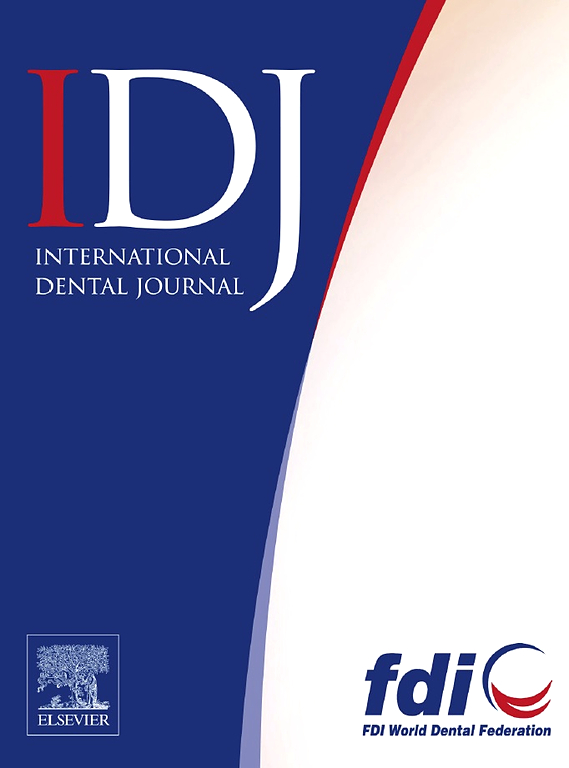Is Simulation of Glued Contact Sufficient to Simulate Nonlinear Failure Behaviour in Dental Shear Bond Strength Tests?
IF 3.2
3区 医学
Q1 DENTISTRY, ORAL SURGERY & MEDICINE
引用次数: 0
Abstract
The aim of this study was to develop a numerical model for simulating shear bond strength tests with different specimen sizes and loading techniques. A finite element model was generated consisting of a composite specimen bonded to dentin substrate surrounded by enamel, acrylic resin and polypropylene tube. Four models were created simulating macro (diameter 1.8 mm) and micro (0.8 mm) sized specimens loaded by either a chisel or a wire loop. Experimental data from a previously published study using the identical specimen diameter and shearing tools were used as reference. Four groups were established: macro shear wire loop (group 1), micro shear wire loop (group 2), macro shear chisel (group 3), and micro shear chisel (group 4). In the simulations, contact-based glue failure based on shear contact stresses (series 1) or a combination of shear and normal contact stresses (series 2) were used to simulate the progressive failure of the specimens. Shear and normal failure stress limits were fitted to the experimental results in sensitivity analyses by varying both stresses. Experimental failure forces could be reproduced using group-specific shear stress limits of 71 (group 1), 48 (group 2), 106 (group 3), and 131 MPa (group 4) in series 1. However, when also considering normal stresses, no single, unique pair of shear and normal failure stresses can lead to the experimental failure force values for all groups. In conclusion, no unique pair of shear and normal stresses can provide the same failure force values for different shear setup geometries.
本研究旨在开发一种数值模型,用于模拟不同试样尺寸和加载技术的剪切粘接强度测试。生成的有限元模型由粘结在牙本质基底上的复合材料试样组成,试样周围有釉质、丙烯酸树脂和聚丙烯管。创建了四个模型,分别模拟宏观(直径 1.8 毫米)和微观(0.8 毫米)尺寸的试样,用凿子或钢丝圈加载。之前发表的一项研究使用了相同的试样直径和剪切工具,实验数据用作参考。实验分为四组:宏观剪切钢丝圈(第 1 组)、微观剪切钢丝圈(第 2 组)、宏观剪切凿(第 3 组)和微观剪切凿(第 4 组)。在模拟中,使用基于剪切接触应力(系列 1)或剪切和法向接触应力组合(系列 2)的接触式胶合破坏来模拟试样的渐进破坏。在敏感性分析中,通过改变剪切应力和法向应力,使其与实验结果相匹配。然而,当同时考虑法向应力时,没有一对单独的剪切和法向破坏应力能导致所有组的实验破坏力值。总之,对于不同的剪切设置几何形状,没有一对剪应力和法向应力能提供相同的破坏力值。
本文章由计算机程序翻译,如有差异,请以英文原文为准。
求助全文
约1分钟内获得全文
求助全文
来源期刊

International dental journal
医学-牙科与口腔外科
CiteScore
4.80
自引率
6.10%
发文量
159
审稿时长
63 days
期刊介绍:
The International Dental Journal features peer-reviewed, scientific articles relevant to international oral health issues, as well as practical, informative articles aimed at clinicians.
 求助内容:
求助内容: 应助结果提醒方式:
应助结果提醒方式:


